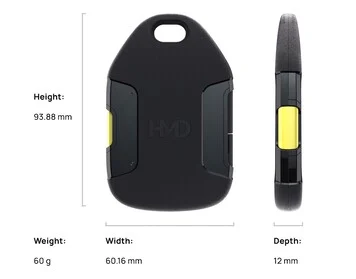The iPhone 14 was the first smartphone that introduced Non-Terrestrial Network (NTN), also known as satellite communications, and it was soon followed by the Pixel 9 series. Now, it seems that the Xiaomi 15 Ultra is set to join the ranks with this feature. But what if you own a different phone and don’t want to spend a lot on a separate satellite communicator for your next off-the-grid adventure?
Introduction of a New Device
A new device that may be just what you need was unveiled at CES 2015, and interestingly, it comes from HMD, which is known as the last home of the Nokia brand. For many of us, a Nokia phone was likely our first real taste of staying connected while on the go.
Features of the HMD OffGrid
The HMD OffGrid is a compact gadget that connects to satellites through the L band spectrum, linking with your smartphone via Bluetooth. This connection enables your phone to send and receive text messages, share live location information, and contact emergency services using an SOS feature. Additionally, the ‘check in’ function allows users to send pre-set messages to their friends with just the push of a button. Recipients don’t need the OffGrid app to receive messages; they only need to be able to text back.
Size and Durability
This device is quite small, measuring 3.7 x 2.4 x 0.47 inches and weighing only 60 g (2.1 oz). HMD also claims that it is rugged and meets military-grade durability standards (MIL-STD-810H), but it’s wise to approach such claims with skepticism. The built-in 600mAh battery is said to last for about three days.
Subscription Plans
However, to access its features, you’ll need a subscription. HMD’s Unlimited Plan costs $15 per month or $140 per year (with a one-time activation fee of $10), which provides unlimited messages, check-in, and SOS services. The Freedom Plan, priced at $80 per year, limits texts (including check-ins) to 350. Both plans include the SOS service, and you can add location tracking to either plan at any time for an additional $6 per month.
Starting in January, the HMD OffGrid will be available in the US, Europe, and Australia/New Zealand, with plans to expand to more regions throughout the year. You can currently order it from HMD’s website for $199. If your budget allows, the Garmin inReach Mini 2 is also available on Amazon for $299, while the older inReach Messenger has a current discount, priced at $235.
Source:
Link






